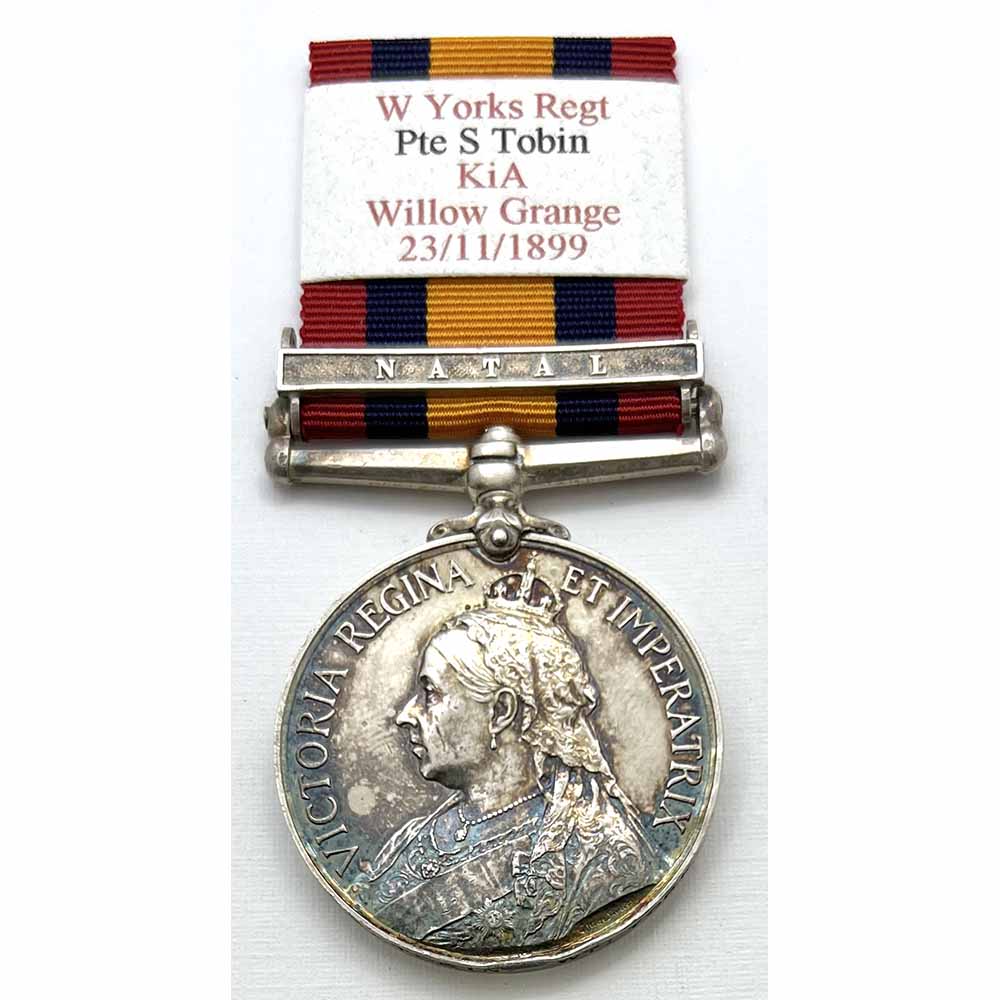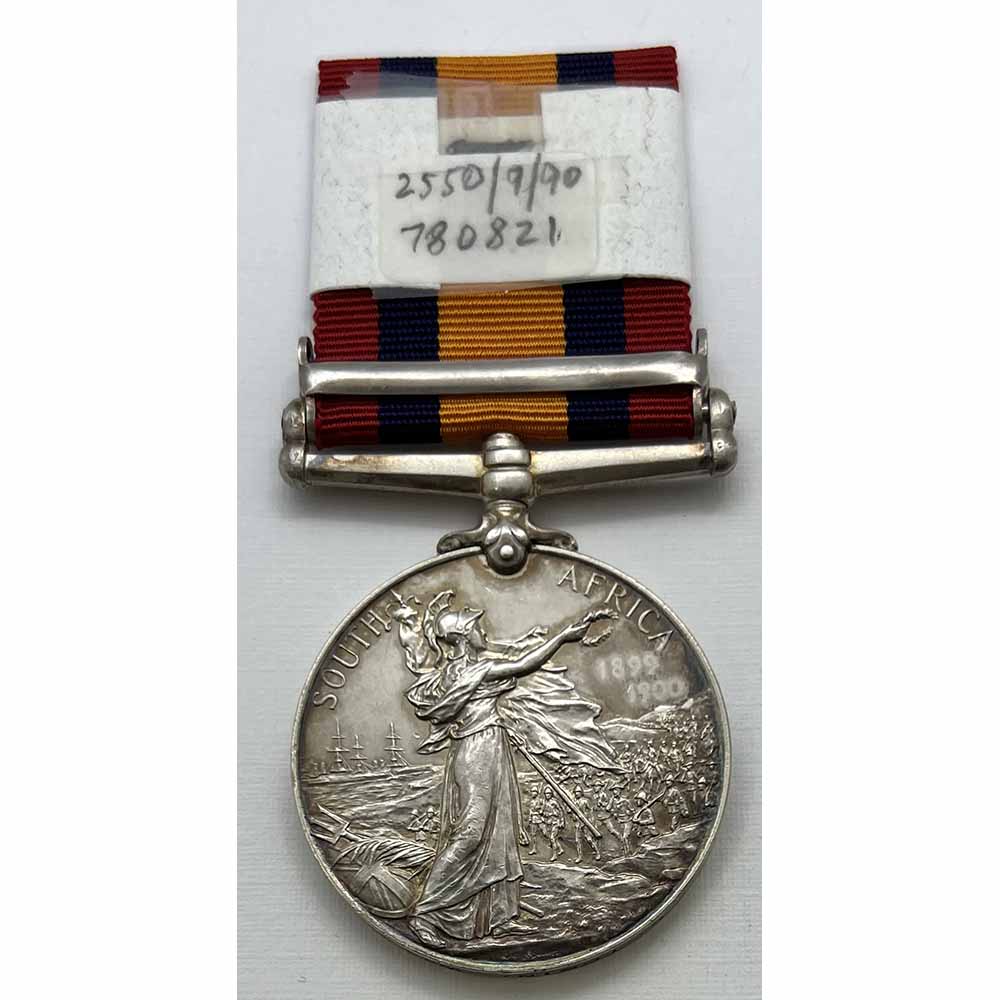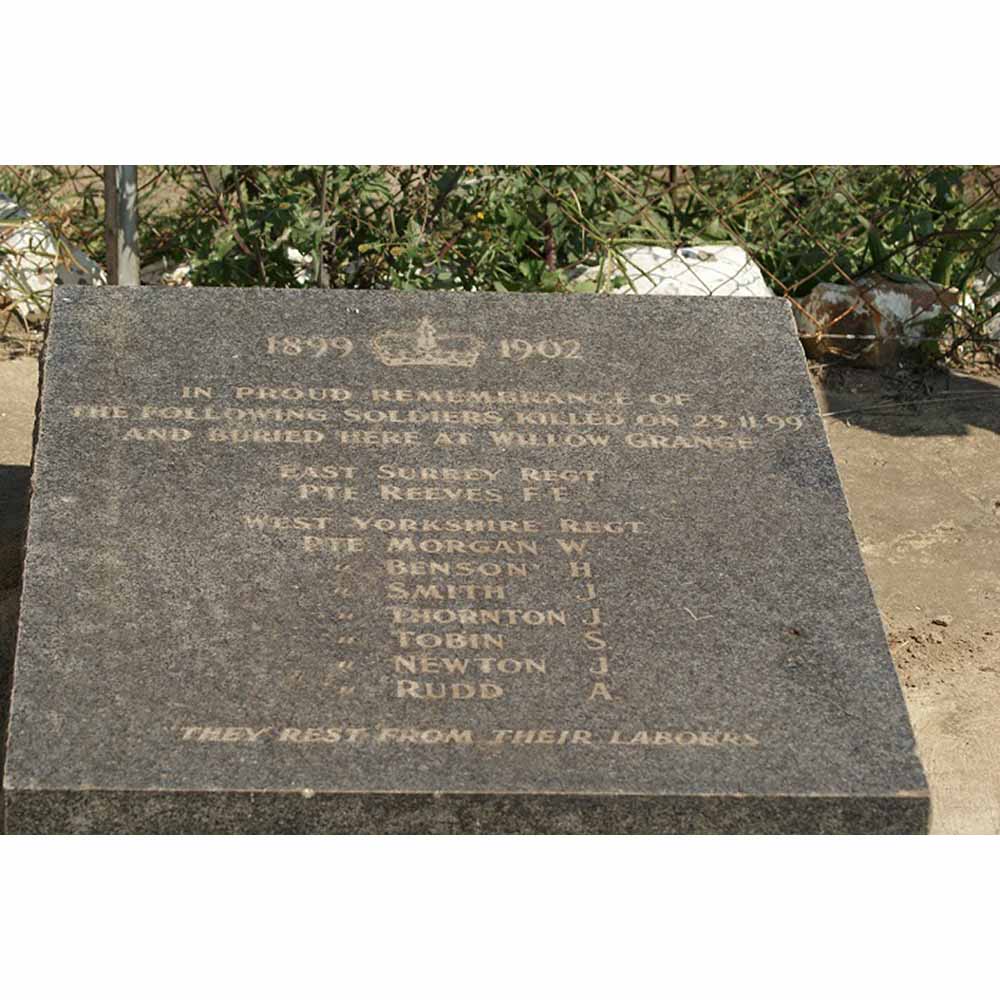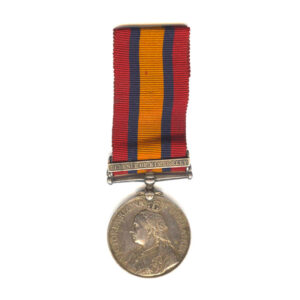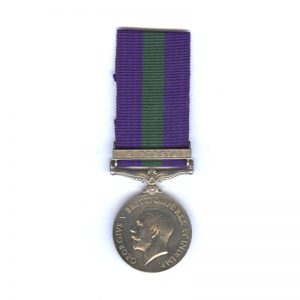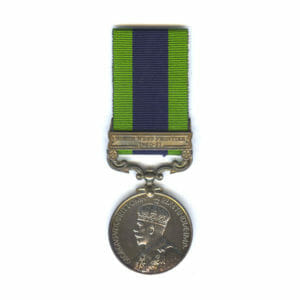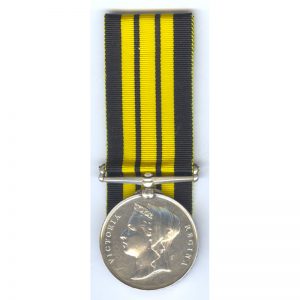Description
Queen’s South Africa Medal, bar Natal, 5446 Private S. Tobin, 2nd Battalion West Yorkshire Regiment, Killed in action at Willow Grange, 23rd November 1899.
One of 11 fatal casualties sustained by the combined force of the 2nd West Yorks and 2nd East Surreys, this was their very first battle of the war, making him amongst the very first of the West Yorks to be killed in action during the war, young Pte Tobin from Leeds, married only a year earlier, was aged about 21, this would have been his first battle.
Officially impressed in large style: “5446 Pte S. Tobin Wt: York: Regt”, One slight edge knock about 6 o’clock, obverse.
He is recorded on the medal roll and mentioned in all Army related records as “S. Tobin”, but his real name was “Peter Tobin”, born 1878 in Leeds, Yorkshire, he had just got married in 1898. He was barely 21 years old when he was posted to service in South Africa, the battalion had landed at Cape Town on the 8th Nov, barely 2 weeks earlier, this would have been his very first day in action with the enemy.
A rare early casualty to the West Yorks, a particularly tricky early battle of the war, mostly fought during the night amongst a tremendous thunderstorm which had struck and knocked out a few British and Boer Troops. A careful strategy from the Boers left them with only 2 killed and 2 wounded, whilst they struck back against the British Force of the East Surreys and West Yorks inflicting over 80 casualties.
A summary of the battle of Willow Grange, 23rd November 1899, from Boer War: A Chronology, by Pieter G. Cloete:
“After alternately occupying and abandoning Willow Grange Station during the previous weeks, Major-General H J T Hildyard, commanding officer at Estcourt, decides on 22 November to take Brynbella Hill, overlooking the station with a force of about 5,200 men with 14 field-guns. He orders a force under Colonel F W Kitchener to occupy Beacon Hill from where he plans to make a night attack on Brynbella, supported by one of his naval guns. It is a very hot day and the un-acclimatized troops are exhausted and thirsty before reaching the foot of Beacon Hill. A heavy thunderstorm first alleviates their plight, but it changes into a hailstorm that leaves them battered and bruised. The Boers also notice their struggle in dragging the naval gun up the steep slope and open fire with their Creusot field-gun.
The British persevere and are soon able to position their naval gun on the summit and return fire until the renewed thunderstorm and darkness suspend the action. After dark, a tremendous thunderstorm engulfs the landscape. Two British soldiers and two burghers are knocked unconscious by lightning and a burgher and six horses are killed on Brynbella.
Slipping and sliding, the British proceed with their night march despite the appalling conditions. After a short rest on the slope, they charge the summit at about 03:00. The small Free State picket abandons their position, blankets and a few ponies to avoid the loathed bayonets and flee down the back slope, leaving the summit in the hands of the jubilant British. At dawn, part of the Krugersdorp commando open fire on the summit. They are soon joined by two field-guns and a pom-pom. As the light improves, Boer rifle fire increases and Kitchener’s position on the summit becomes steadily worse.
At about 09:00 he realises that he will have to retreat to avoid being cut off and surrounded. The retreating British troops are raked by Boer shellfire. Only when their own artillery return fire, can they fall back to Beacon Hill and from there to Estcourt, arriving at about 11:00.
The British lose 11 killed
